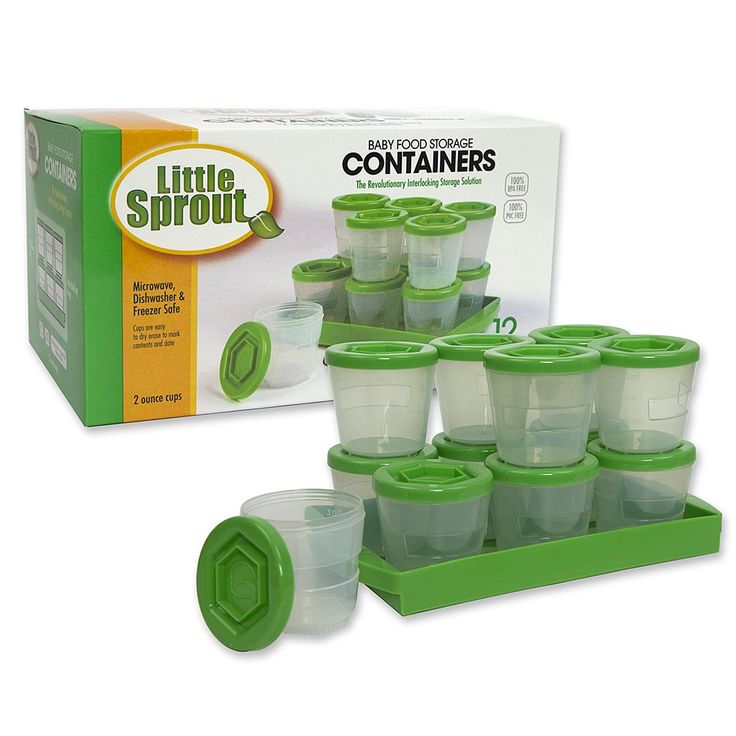How to keep baby awake after feeding
Baby Falling Asleep at the Breast? These 5 Tips Can Help!
Most newborn babies will wake regularly and frequently to breastfeed. However, there may be times when your newborn baby needs to be awakened to breastfeed.
For example, there may be medically indicated reasons why a baby may need to be woken to feed such as Jaundice, congenital heart disease, illness or your baby may not be gaining adequate weight...
Share this content
Is Falling Asleep at the Breast Normal?
Babies are biologically programmed to fall asleep at the breast. Falling asleep at the breast is a normal behaviour and is mostly due to a hormone called cholecystokinin or CCK. CCK makes your baby feel full and sleepy and it is released in your babies gut as soon as they start sucking.
Younger babies generally have higher concentrations of CCK which can make it harder to keep them awake during a feed. This is a perfect system if your baby is waking frequently and feeding well but for the baby who is needing to be woken or to be encouraged to feed it can be a challenge.
So how do you keep a sleepy baby awake at the breast? There are some simple but effective things that you can do to help
Try Skin-to-Skin Contact
Keeping your baby in the skin-to-skin position can help ignite your baby’s natural feeding instinct and encourage them to feed. After all, if you are in the kitchen, you want to eat! Babies can easily find the breast in this position and may spontaneously feed.
Skin-to-skin contact also allows you to notice subtle feeding cues that otherwise may be missed. Your baby may only make a slight wiggle to signal to you that they are ready to feed and if you are holding them closely on your chest you are more likely to notice.
Learn Your Baby’s Early Feeding Cues
Understanding your babies feeding signals and feeding them when they are showing early ready to feed signs can help them to feed better. Check out the Australian Breastfeeding associations Feeding cues article for pictures of early and late feeding cues.
Check out the Australian Breastfeeding associations Feeding cues article for pictures of early and late feeding cues.
Compress Your Breasts
While your milk is flowing your baby will be actively sucking but once the flow of milk slows down your baby may slow down or stop sucking altogether. By gently compressing your breasts you will be encouraging your milk flow to continue… and this can help your baby to begin sucking and swallowing again. Read more tips on helping your breast milk flow.
Dr Jack Newman demonstrates breast compressions in this YouTube clip:
Switch Sides
Your breasts work simultaneously, so, when you are feeding on one breast, the other side is also experiencing a letdown.
Once your baby begins to fall asleep, switch sides so that there is a fresh supply waiting for them. You can repeat this several times (switch back and forth between breasts) because you have more than one letdown per feed.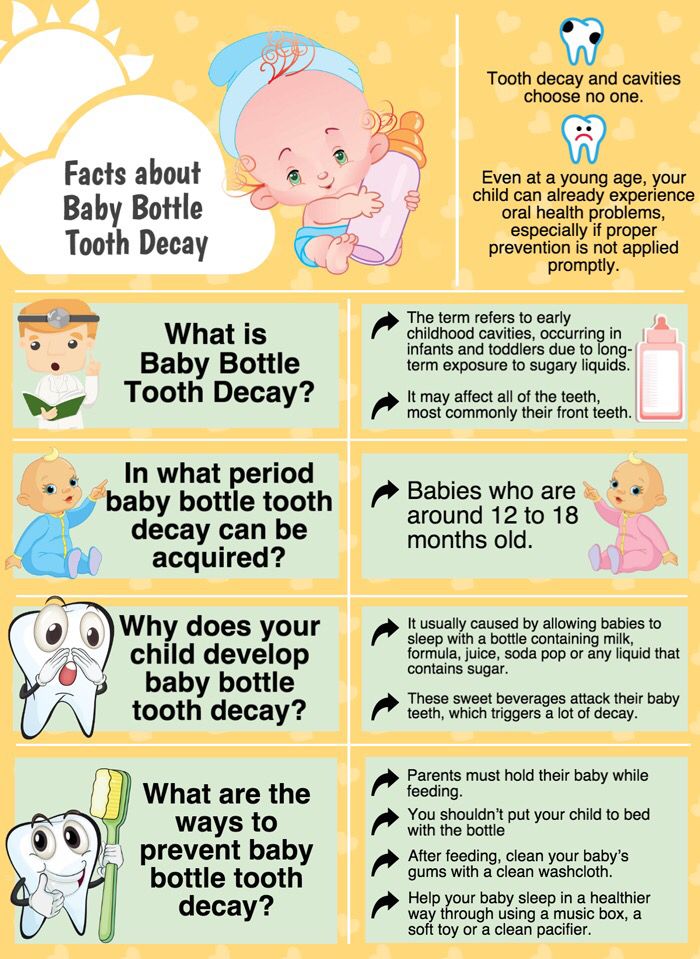
Changing breasts can make it easier for a baby to fill their tummy when breastfeeding. You can also mix it up by switching sides and use breast compressions together
Use Gentle Stimulation
If your baby falls asleep and stops feeding (it's possible for babies to continue feeding while they are sleeping), gently stroking their hands and feet can stimulate them to stay awake for longer.
Sitting your baby up and giving them a gentle back rub can also help to wake them up and it gives them the opportunity to expel any trapped wind that they may have. If that fails, changing your babies nappy mid feed can rouse them enough to feed some more.
Babies are all different and all feed in different ways so what is “normal” for one baby may be different from another. If you are concerned about any aspect of feeding it is essential that you seek help early and it is always important that you follow your health practitioner’s advice.
As a general rule, if your baby is having at least six very wet cloth nappies or at least five very wet disposable nappies of pale urine, 3 or runnier bowel actions in 24 hours then you can be assured that your baby is getting enough milk.
For more information contact:
- Your General Practitioner
- An International Board-Certified Lactation Consultant
- Your Maternal Child Health Nurse
- The Australian Breastfeeding Association
Have you ever had a baby that always seemed to fall asleep at the breast? What did you do to improve the situation? Let’s have a chat and support each other here or on the Medela Australia Facebook page.
Eat-Wake-Sleep Cycle - The Baby Sleep Trainer
Skip to contentLast Updated Jul 22, 2019.
Parents will see the “Eat, Wake, Sleep” (EWS) cycle recommended in various books and online as a way to encourage their newborn to sleep longer. There is a reason the eat wake sleep (EWS) cycle has persisted as a recommendation for over a decade. It is because it really is an effective way to get longer stretches of sleep from our babies. However, EWS is useful beyond just the newborn months. I recommend my clients to follow EWS until their toddler is totally weaned off of breastmilk/formula feedings all together. So what is the Eat-Wake-Sleep Cycle?
I recommend my clients to follow EWS until their toddler is totally weaned off of breastmilk/formula feedings all together. So what is the Eat-Wake-Sleep Cycle?
Photo Credit: rawpixel.com
What Is the Eat-Wake-Sleep Cycle?
The definition of the EWS cycle is very simple. When your child wakes from nighttime or nap sleep, you immediately feed them. You want to keep them 100% fully awake from the start to the end of their feeding. (With very, very young babies the “keeping awake part” is a challenge! But your job is to simply try your best and know that it will improve with time.) Once the feeding is complete, you keep your baby awake until it’s time to sleep. That could be anywhere from 30 minutes to 2 hours depending on your kiddo’s age. Then when it’s time to put them down for a nap, they fall asleep in any way that does NOT involve feeding.
If they are not yet sleep trained, this means they may fall asleep while being rocked or held.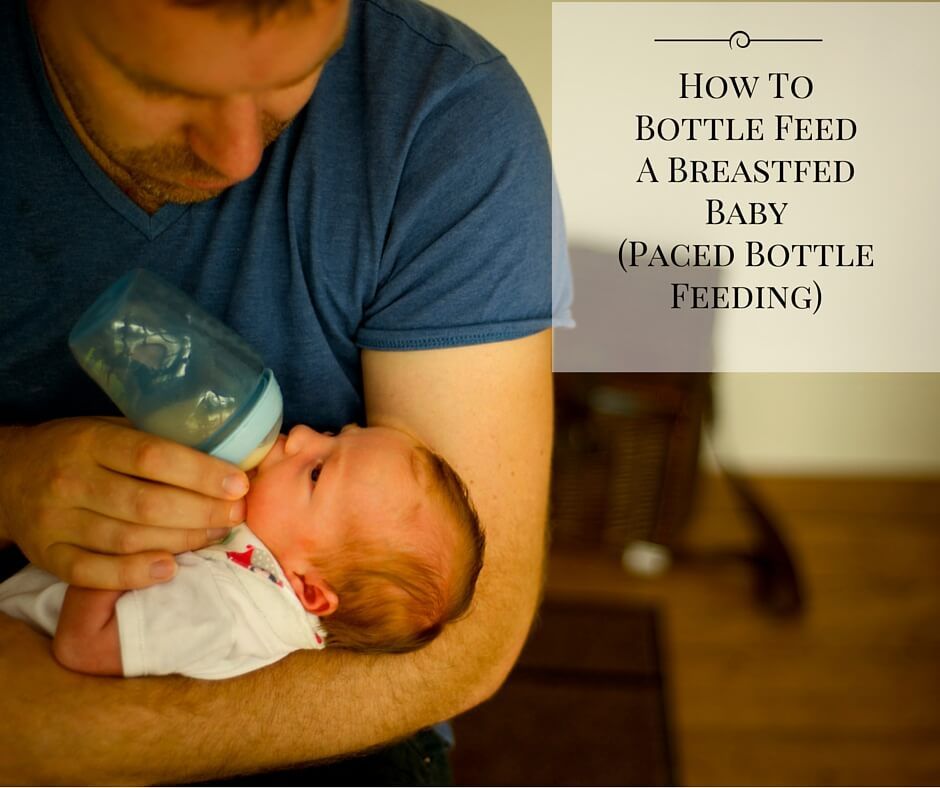 Once they’re sleep trained, they will fall asleep on their own.
Once they’re sleep trained, they will fall asleep on their own.
While following the Eat, Wake, Sleep cycle can be an effective feeding method, you should always feed your child when you believe they are hungry, and should only follow the Eat, Wake, Sleep cycle with approval from your pediatrician
When implementing the EWS cycle, you typically do not feed your baby again within the same cycle. Unless in rare circumstances when a child is, for example, on a two nap schedule and their first nap ends around 10 am and their next nap doesn’t start until 1:30 pm. In a case like that, they’d have a milk feeding upon waking from nap one. Then another feeding about 2+ hrs later (say, around noon). And then a nap about an hour or two after that. Even in this example, eating and sleeping are never associated with one another.
Sign up for my newsletter!
How the Eat-Wake-Sleep Cycle Works
The reason behind why EWS encourages longer periods of sleep is simple. In the early months of life, babies fall asleep frequently while eating. This often causes them only to take small meals, which means they wake quickly, hungry for another feeding. If you focus heavily on trying to keep them awake during feedings you will eventually see that they can take more substantive feedings at once.
In the early months of life, babies fall asleep frequently while eating. This often causes them only to take small meals, which means they wake quickly, hungry for another feeding. If you focus heavily on trying to keep them awake during feedings you will eventually see that they can take more substantive feedings at once.
Things like reflux can impede a young infant from taking larger meals, but reflux can be dealt with by using medication that your doctor prescribes. Or simply waiting until baby is older and has outgrown it. Once baby’s feedings get larger, they will be able to sleep for longer periods of time. When combining the EWS cycle with other newborn sleep tips, you will likely find your newborn sleeping much longer periods of time overnight, and perhaps for naps as well. Even if you are experiencing short naps, the EWS cycle will still be helpful. Feed your baby every time they wake, and focus on making it a full feed. The more they eat during the day, the less likely they are to wake to eat overnight.
Learn more about my newborn sleep program
For older babies (those about 4-5 months and older)…
The EWS cycle is helpful for the same reason above, and because it eliminates a common sleep prop. Even when I work with an 8-month-old baby, I encourage the parents to only feed upon waking. This is because feeding in between naps can cause a child to fall asleep while eating. Generally speaking, if an older baby takes a good, full feeding upon waking, they are unlikely to be hungry again before it’s time for their next sleep period.
Tired signs are often mistaken for signs of hunger. So if a parent feeds baby, they’ll likely find their child falls asleep. This then defeats the purpose of sleep training because
1. the child is being helped to sleep,
2. the child is sleeping outside of when they are supposed to be sleeping, and
3. they will be unlikely to take a full feeding once they wake, since they just took a feeding before their nap.
Also generally speaking, infants and toddlers should be offered some form of calories, whether through milk or solids, every two to three hours. You can see a sample two nap schedule with feeds here.
How to Start an Eat-Wake-Sleep Cycle
Many parents simply cannot see how their child who is used to being fed to sleep could ever get on an EWS sleep cycle. The secret is in the morning feeding. Try to get your child to take a big, full feed when they wake in the morning. Then, don’t give them a milk feed before their nap. They should then be hungry enough to take a full feed after their first nap.
Often parents are unable to get their baby to take a large morning feeding because they are feeding too much/too often overnight. To those parents, get an okay from your pediatrician to cut out all night feeds. Or to keep just one night feed. If keeping a single night feeding, try to make it a feed that occurs the first time your child wakes after 1 am. This should give them enough time to be very hungry for the first feed of the day.
This should give them enough time to be very hungry for the first feed of the day.
As with anything feeding-related, do not implement any of these recommendations without going over them in detail with your pediatrician.
Learn more about The Baby Sleep Trainer Program!
Remember, the Eat-Wake-Sleep Cycle…
- Is very helpful for newborns through toddlerhood.
- The goal is to feed baby as soon as they wake up, and then NOT feed them again until after they wake from their next sleep.
- EWS can help parents extricate themselves from a feeding-to-sleep relationship.
- Start EWS as soon as baby wakes up for the day.
If you’re interested in learning more about healthy sleep habits for your baby, and age-appropriate sleeping and feeding schedules – sign up for my newsletter!
Sign up for my newsletter!
Search for:
Articles by Age
Categories
- Naps
- Newborn
- Opinion
- Sleep FAQs
- Sleep Training
- Getting Started
- How To Be Successful
- Success Stories
- Troubleshooting
How to wake up a baby for feeding and whether it is necessary to wake up a baby in the afternoon
05/29/2020
95
For any parent, the question of whether to wake up the baby is not easy.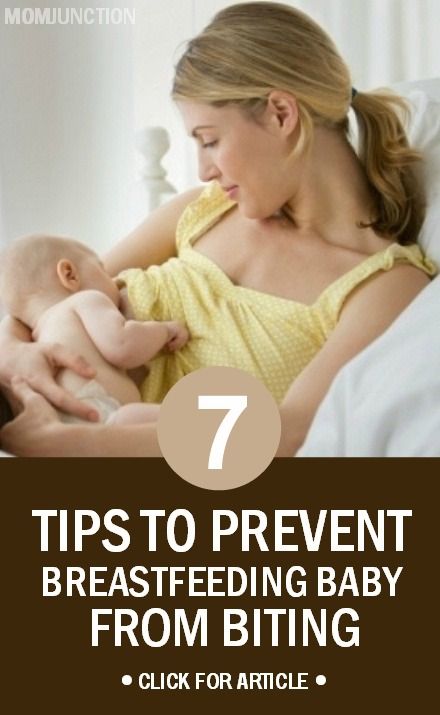 On the one hand, there are fears that a child who has been sleeping for a long time will not be able to fall asleep later, and on the other hand, how to raise such an angel who has been put to bed for so long...
On the one hand, there are fears that a child who has been sleeping for a long time will not be able to fall asleep later, and on the other hand, how to raise such an angel who has been put to bed for so long...
so that his sleep is not affected.
Let's start with the smallest children. You've probably heard the phrase "never wake a sleeping baby." But it is not always fair. Some newborn babies wake up on their own for feedings, while others need to be awakened. Whether or not you need to wake your baby depends on their age, weight, and overall health.
The American Academy of Pediatrics recommends waking your baby for feedings if he sleeps more than 4 hours in the first two weeks of life. On average, a baby needs feeding every 2-3 hours.
Frequent feeding is very important for several reasons:
- The baby's stomach is very small, the baby quickly digests breast milk. Faster than a mix. Therefore, physiologically, the child necessarily needs frequent feedings every 2-3 hours.

- Babies can sometimes sleep even when hungry, thus malnourished, which affects their development.
- After birth, the baby loses 5-10% of its body weight. And in the first weeks he needs to gain weight. Lack of milk or formula slows down this process.
- A short interval between feedings helps to maintain lactation. That allows you to avoid problems with a lack of milk in the future.
Tears already signal strong hunger. Therefore, it is better to breastfeed the baby before the baby starts crying. Learn to recognize the early signs of hunger: the baby puts his hand in his mouth, smacks his lips, tossing and turning when he sleeps.
Should the baby be woken up to feed during the day? In general, if an infant sleeps for more than 3 hours in one dream during daylight hours, he must be awakened. Then the mother can feed the already awakened baby. This makes it possible to adjust the work of the biological rhythms of the baby.
How to Wake Up
- Help your child gradually fall asleep by stroking their arms, legs or lightly tickling them.

- Change diaper. Often this is enough for the baby to wake up and be ready to eat.
- Undress and place skin to skin on your chest. You can squeeze a few drops of milk onto your baby's mouth. He will smell and taste it and begin to suck on the breast.
- Speak - he will hear your voice and wake up.
- Do not turn on bright lights. A dim light is sufficient. The bright light will blind your eyes.
- If the baby has attached to the breast but has not begun to suckle, stroke his cheek.
How long to feed
As soon as the baby wakes up and starts to eat, make sure that the feeding is long enough to empty at least one breast. So we will know that he ate hind milk, which is necessary for the growth of the child's body. Some babies take 45 minutes or more to feed one breast, and some do it in 10 minutes.
The sucking reflex promotes falling asleep. Therefore, make sure that the baby does not fall asleep while feeding. If he falls asleep, change position, lift him up to burp, and then start feeding again.
If he falls asleep, change position, lift him up to burp, and then start feeding again.
By 6 months you will have a more or less predictable eating schedule. But each baby will have his own. Some of the children eat every 2 hours, and someone is able to stay without food for 3-4 hours by the second month of life. This is especially true for children who are formula fed.
The length of time between feedings increases as the child grows older. By the age of six months, many babies can already go without supplements at night or are able to sleep for longer periods.
If a child wakes up too often after 6 months and asks for food at night, perhaps this is no longer hunger, but a way to relax and fall asleep.
Avoid using a pacifier in the first weeks after delivery. The pacifier helps the child to calm down and prolong sleep. So you may not notice that your baby is hungry. Therefore, start using a pacifier no earlier than 4-6 weeks and when you are lactating.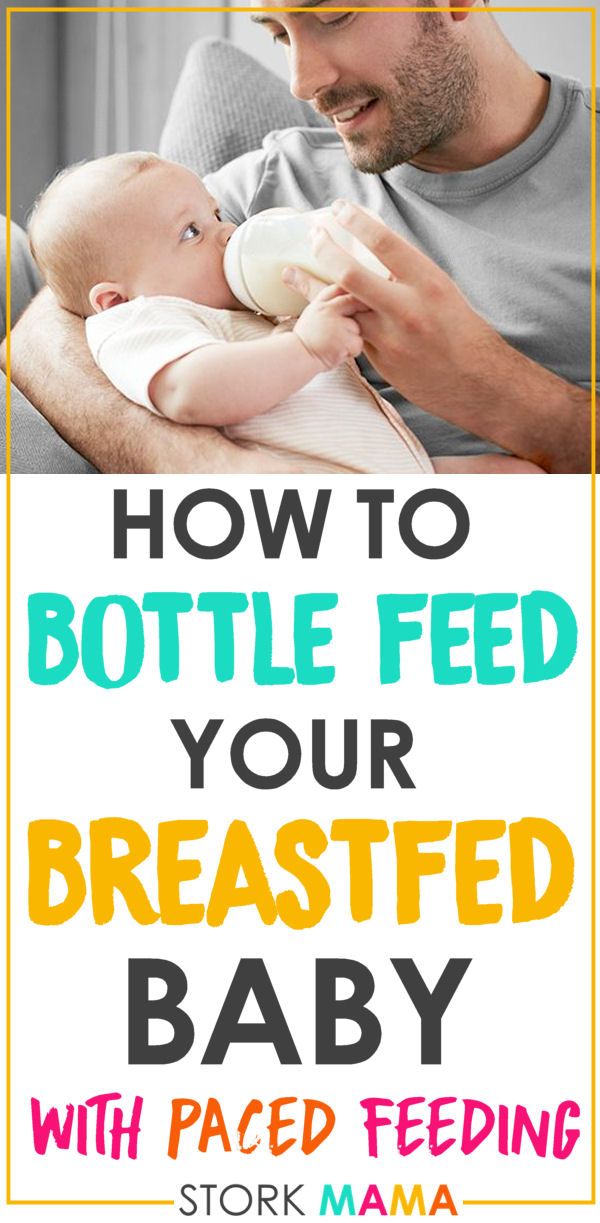
Should the baby be woken up to feed formula? As with breastfeeding, the newborn needs frequent formula feeding. But the interval will be more than 3-4 hours.
When it is necessary to wake up the child
It is important to wake up the baby in the morning if he has fallen asleep later than 7.00. This is especially true for children who still sleep 1-2-3 times during the day and have already developed a relatively stable routine. So you create the perfect routine in the morning.
After waking up, children need time to work up their fatigue for their next nap, the ideal window for which is around 9 and 1 pm (depending on age).
Therefore, if the baby slept until 8 am, he simply will not be able to fall asleep in his first daytime sleep.
In order for the baby to wake up calmly without tears, you can enter a wake-up ritual. It allows the child to smoothly transition from a sleepy state to wakefulness.
Example of a wake-up ritual:
- Open curtains/turn on lights
- Welcome words and a kiss
- Snacks, nursery rhymes after sleep
- Happy song
Then you can get up and start breakfast. For older children, such a ritual is also necessary.
For older children, such a ritual is also necessary.
The awakening ritual has different purposes:
- Marks the end of sleep,
- Teaches a child that everyday sounds are not a reason to wake up,
- Helps prevent baby from crying when waking up.
It will also be useful to have a light alarm. If the baby wakes up early, he will stay in bed until he sees the light on the clock.
When to wake your baby up after a nap
Many babies from 4 to 8 months sleep three times a day.
In this mode, it is important to wake up the baby after the third nap no later than 17.00. The duration of this segment is about 45 minutes, but not more than an hour. Then you can easily put the baby to bed by 19 o'clock.
Transition to one nap
At the age of 15-18 months there is a transition to one nap. It can be long and take place in different ways.
For example:
In the morning, the baby falls asleep easily and sleeps up to 2 hours. But then it is difficult to put it in lunch. And by the evening without rest at lunchtime, he is already overworked and falls asleep with difficulty.
But then it is difficult to put it in lunch. And by the evening without rest at lunchtime, he is already overworked and falls asleep with difficulty.
So if this is your case, you can pick up the baby after 60-75 minutes. At the same time, move the start of the second sleep 15 minutes later. But if the baby sleeps for 1 hour in the morning and then it’s already difficult to fall asleep a second time, start putting him down only at lunchtime.
One nap after 2 years
Between 2.5-5 years, naps may disappear. Here again, the story described above is often repeated. It seems that the child falls asleep perfectly during the day, sleeps for a long time, but in the evening, laying down is delayed until 10-11 pm. The problem is that getting up early in the morning to the garden usually does not allow you to sleep the necessary 10-11 hours per night. And again, you will have to gradually limit the duration of daytime rest. Wake your baby up after 60 minutes first, then skip the daytime so your baby sleeps better at night.
Keep an eye on your baby while doing this. If he is calm in the evening and falls asleep easily, and wakes up later than 6 o'clock in the morning in a good mood, then you are doing everything correctly.
If you notice excessive moodiness in the late afternoon or regular awakenings too early, then it is worth giving the baby more time to rest at lunchtime.
Like this article? Rate:
Votes: 91
How to wake up a baby for feeding? Recommendations
Babies need to eat regularly to ensure full growth and development. At least once every 2-3 hours. During the day, the child will sleep a lot. The only way to feed him is to wake him up.
We will tell you how to do it carefully. So that the child feels comfortable. And I didn't cry.
How to wake up the baby?
It is necessary to wake the baby when his sleep is not sound
Sleep in babies is practically no different from adults.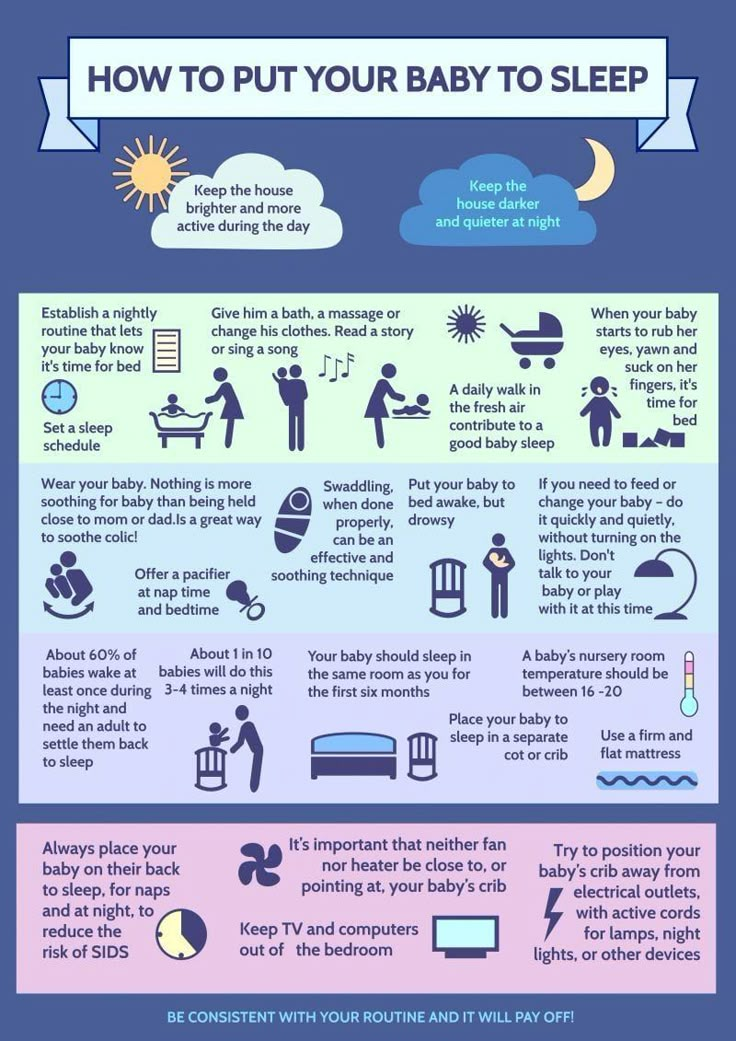 It can be shallow or deep. The phases that a child encounters are similar to those of an adult. We recommend waking your baby when he is in a state of light sleep. In this case, the likelihood that he will wake up easily and without unnecessary problems increases.
It can be shallow or deep. The phases that a child encounters are similar to those of an adult. We recommend waking your baby when he is in a state of light sleep. In this case, the likelihood that he will wake up easily and without unnecessary problems increases.
How can you tell if your baby is in light sleep?
To determine that the baby is in a state of light sleep, you can use the following features:
- The child constantly moves his lips. Makes gestures similar to those when he sucks at the breast.
- The baby moves his limbs involuntarily. Both feet and hands.
- A smile appears on the child's face.
What should I do if my child is in deep sleep?
If your child is in a deep sleep, do not wake him up. Proceed in an alternative way. Sit next to him. And start monitoring his behavior.
After some time, the sleep phase may change to a shallow one. As a result, the child will show signs of such a dream.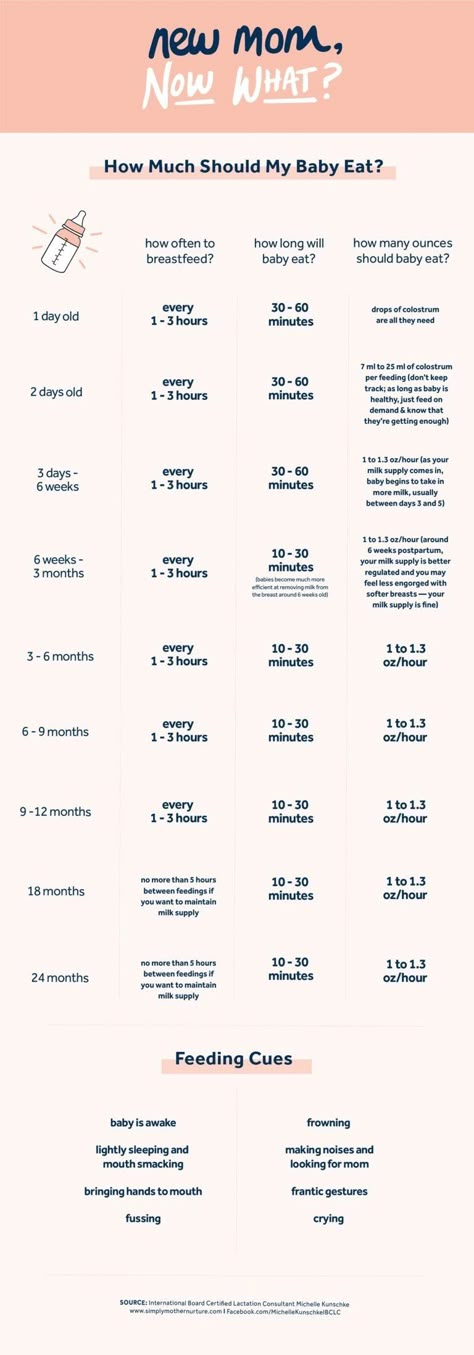 And it will be easier for you to wake him up.
And it will be easier for you to wake him up.
It is recommended to wake your baby with light touches
To wake your baby, you need to touch him regularly. Physical contact wakes children up best. So, for example, you can:
- Try to take the child's clothes off.
- Raise the child's blanket a little.
- Stroke the child's handle.
- Pat your head.
- Stroke the cheeks.
All kinds of physical contact will have a positive effect on the child. Make sure he wakes up. And feel energized.
Removing a blanket or clothes from a child is very effective. Because, thanks to the feeling of cold, the baby will be able to wake up quickly. Touching a child is also very effective. Thanks to your touch, he will feel calmer. And get ready to drink milk.
You can wake up the baby by taking him out of the crib
Try to go to the baby's crib. And then take it out of there. And keep in the appropriate position (head up) for a while. If the child does not wake up immediately, then at least he will quickly move into a phase of shallow sleep. And in some cases, he will even have the opportunity to fully wake up.
And keep in the appropriate position (head up) for a while. If the child does not wake up immediately, then at least he will quickly move into a phase of shallow sleep. And in some cases, he will even have the opportunity to fully wake up.
When you take a child in your arms, do not be silent. Make different sounds. Talk. Sing. Sounds will help wake up the baby.
If the baby is sleeping in your arms, do the following
Place him in the position in which he always consumes milk. Then bare your chest. And bring it to the child's mouth.
It is necessary to make sure that milk gets on the baby's lips without fail. When the child tastes the liquid, it will cheer him up. He will wake up.
Lightly tickle the baby
Some babies wake up quickly when their parents start tickling them. For arms or legs. However, this must be done with the utmost care. And only slightly. So that the child does not feel discomfort when you tickle him.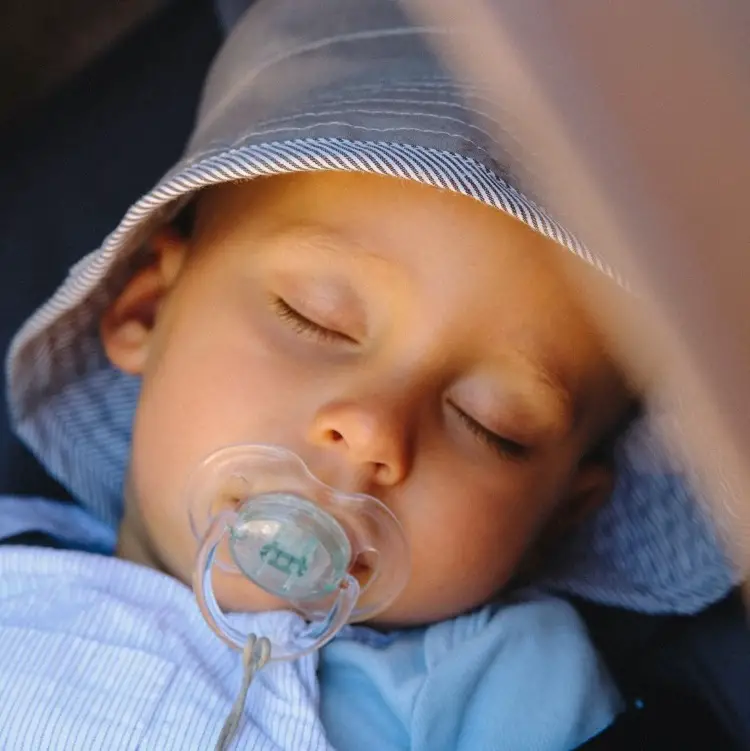
You can also wake up your child in an alternative way. For example, you can just blow on it. Or touch your cheek.
You can wake up the baby with the use of a cold temperature cloth
When the child feels the cold temperature material on himself, he will cheer up at the same moment. And wake up. You need to proceed as follows.
You need to take a cloth. Moisten it with cold water. Then start wrapping your baby. different parts of his body. Both legs and head, handles.
Turn on the light in the room where the baby is lying
If the baby is placed in a room with no light, then try to change the situation. Let traditional street light into it. To do this, just open the curtains.
This will cause the child to wake up quickly. Feel great. And at the same time it will become vigorous.
Make some noise where the baby is located
Noise will help wake up the baby. However, it should be minimal. You should increase the noise level in the room, but not too much.
You should increase the noise level in the room, but not too much.
For example, you can sing. Talk to your husband. Or do something else. The main thing is that it makes noise.
Why does a child need to eat every few hours?
A child's health depends on how well he or she eats. To stay strong, the child must necessarily consume milk every two to three hours. When feeding, consider the following points:
- Children cope with the digestion of food in a fairly short time. The baby can become hungry within an hour and a half after the previous feeding.
- You should always check whether the child is full. Isn't he hungry? Also, you must remember when he last consumed food. And feed him faster than he asks for it himself.
How do you keep your baby awake when you feed him?
When you feed a sleepy baby, keep an eye on his condition. Do whatever you can to keep him awake. To do this, adhere to the following recommendations.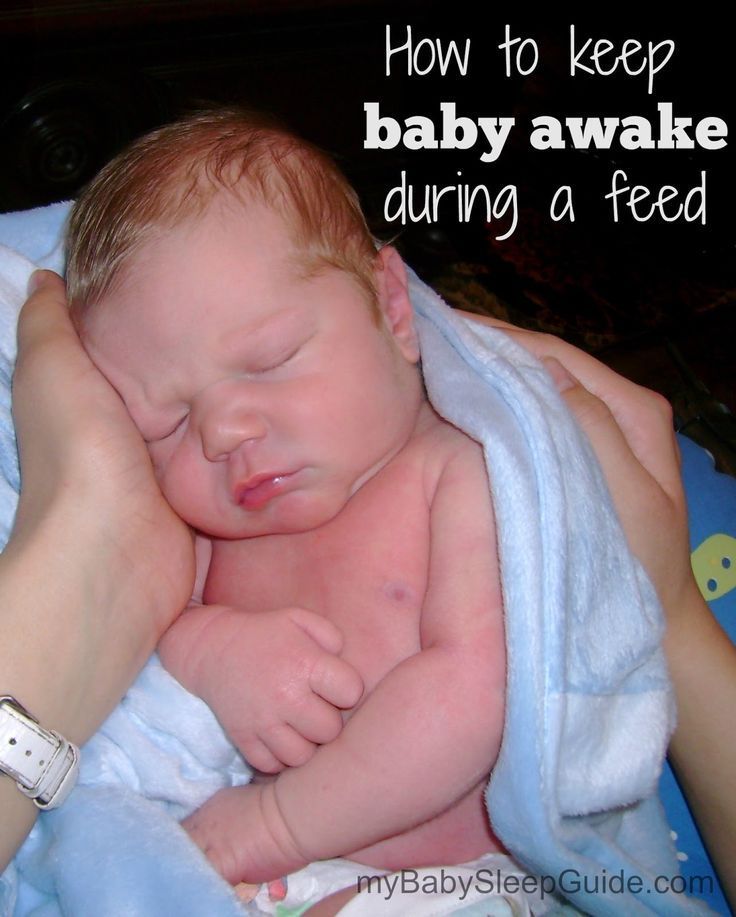
Hold baby's attention
When you start feeding your baby after waking up, try to grab his attention. And hold until you completely feed the child. To do this, you can:
- Laugh.
- Talk to a child.
- Look at him. Establish eye contact.
- Tickle him lightly.
And so on. As you feed, you will discover ways to keep your baby's attention.
Place the baby in a position that will keep him awake when feeding
Be aware that breastfeeding immediately after waking up can be dangerous. During this, the child will feel your warmth. The way the heart beats. As a result, it will be very easy for him to fall asleep.
To prevent this from happening, you need to change the child's position. Position him so that he is not entirely comfortable. And, as a result, to make it more difficult for him to fall asleep.
If the baby falls asleep during feeding, move him to the second breast
All babies sometimes fall asleep during feedings. This is fine. If a similar situation happens to you, then simply move the baby to the second breast. Thanks to this movement, you can cheer him up. Make sure he feels great. And no more sleep.
This is fine. If a similar situation happens to you, then simply move the baby to the second breast. Thanks to this movement, you can cheer him up. Make sure he feels great. And no more sleep.
There is an alternative. You can take the nipple from the child. Get it out of your mouth. Thanks to this, the child will cheer up at the same moment. And he wants to continue to consume milk.
Also, we recommend using one more option. Just put some milk on your child's mouth. This method is great to cheer up the child.
Let your baby spit up
There is another effective way to get rid of drowsiness in a child. Let him sit in a comfortable position. And burp.
When he does this, he will cheer up. Will no longer want to sleep. And easily complete the procedure of eating.
Increase the milk pressure
Increasing the milk pressure will have a positive effect on the baby's condition. Make him drink more milk.

